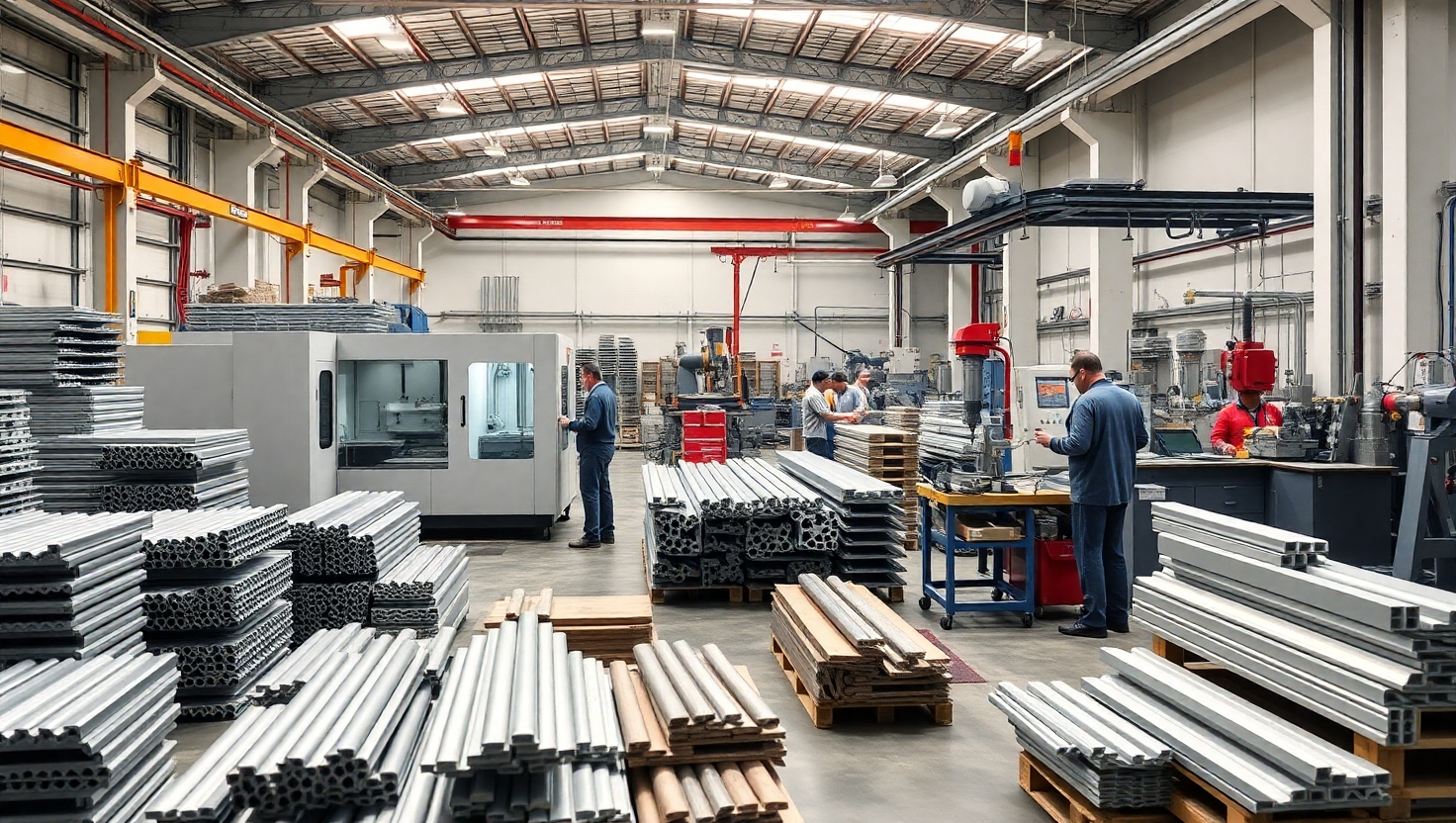What Happens Inside an Aluminium Extrusion Machine Shop? A Walkthrough
Published by: ALUTimes | Date: July 10, 2025
Introduction
Ever wondered what really happens behind the scenes at an aluminium extrusion machine shop? These facilities are the lifeblood of modern aluminium manufacturing, where raw material is transformed into the intricate profiles used in windows, doors, solar panels, automobiles, and beyond. This comprehensive walkthrough explores the inner workings of an extrusion shop, breaking down the equipment, process steps, safety protocols, quality controls, and innovations that power this vital industry segment.
What Is Aluminium Extrusion?
Aluminium extrusion is a manufacturing process where aluminium alloy billets are heated and forced through a shaped die under high pressure. This creates long, continuous profiles with consistent cross-sections such as rods, angles, channels, or custom geometries. The process enhances strength, design flexibility, and material efficiency while being sustainable and cost-effective.
Step-by-Step Aluminium Extrusion Process
- Billet Preparation: Aluminium logs are preheated to 400–500°C to soften them for extrusion.
- Extrusion Press: A hydraulic press pushes the billet through a steel die to form the desired profile shape.
- Quenching: The extruded profile is rapidly cooled using air or water mist to lock in mechanical properties.
- Stretching: The profiles are pulled to straighten and relieve internal stress.
- Cutting: Profiles are cut to length, either standard or custom sizes.
- Aging: Heat treatment in an aging oven improves hardness and performance.
Inside the Machine Shop: Key Equipment
- Extrusion Press: Ranging from 600 to 9,000 tons in force, this is the heart of the shop.
- Billet Heaters: Ensure the billet is preheated evenly and quickly.
- Cooling Tables: Long tables with air or water mist quenching systems.
- Pullers and Stretchers: Machines that maintain alignment and relieve stresses.
- Saws: Hot saws for rough cutting and cold saws for precision trimming.
- Aging Ovens: Controlled ovens for heat treatment (T5 or T6 tempering).
- Dies and Tooling Workshop: For design, maintenance, and testing of custom dies.
Automation and Digital Monitoring
Modern extrusion shops often use Industry 4.0 technology including SCADA systems, PLCs, and IoT sensors to monitor pressure, temperature, and alignment in real time. This enhances consistency, energy efficiency, and reduces downtime due to predictive maintenance.
Quality Control Measures
- Dimensional checks using calipers, micrometers, and laser profilers
- Hardness testing and mechanical property validation
- Surface inspection for defects like die lines or blisters
- Anodizing and powder coating samples for adhesion and color match
Workplace Safety in Extrusion Shops
Safety is a top priority in any extrusion facility. Common protocols include:
- PPE (Personal Protective Equipment): gloves, helmets, eyewear, safety boots
- Thermal protection zones near hot billets and presses
- Emergency stop systems and interlocked doors
- Safety training and fire drills conducted monthly
Environmental Considerations
Most aluminium extrusion companies today invest in sustainable practices:
- Using recycled aluminium billets to reduce emissions
- Heat recovery systems from ovens and press exhausts
- Effluent treatment and water recirculation in cooling
- LED lighting and solar panels in shop infrastructure
Who Works in an Aluminium Extrusion Shop?
A variety of skilled professionals ensure smooth operations:
- Extrusion Operators control the press and monitor parameters
- Die Designers and Toolmakers engineer custom tooling
- Quality Inspectors ensure product specifications
- Maintenance Engineers keep systems running efficiently
- Production Supervisors manage shifts and planning
Applications of Extruded Aluminium Profiles
Extruded profiles are used in various industries:
- Construction (window frames, curtain walls, structural supports)
- Automotive (chassis, bumper beams, battery enclosures)
- Renewable energy (solar panel frames, mounting systems)
- Furniture and interiors (frames, trims, decorative bars)
- Railways and aviation (floor panels, handrails, ladders)
Conclusion: Why It Matters
Aluminium extrusion machine shops are central to the production of modern lightweight, durable, and customizable components. With growing demand in infrastructure, mobility, and sustainability, these facilities continue to evolve. If you’re considering entering the aluminium industry, understanding how an extrusion shop works is crucial for innovation, efficiency, and future-readiness.
Disclaimer
This article is for informational purposes only and based on publicly available data. ALUTimes is an independent publisher and is not affiliated with any specific extrusion machinery manufacturer. All views are unbiased and educational in nature.

